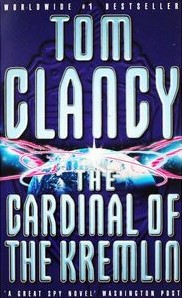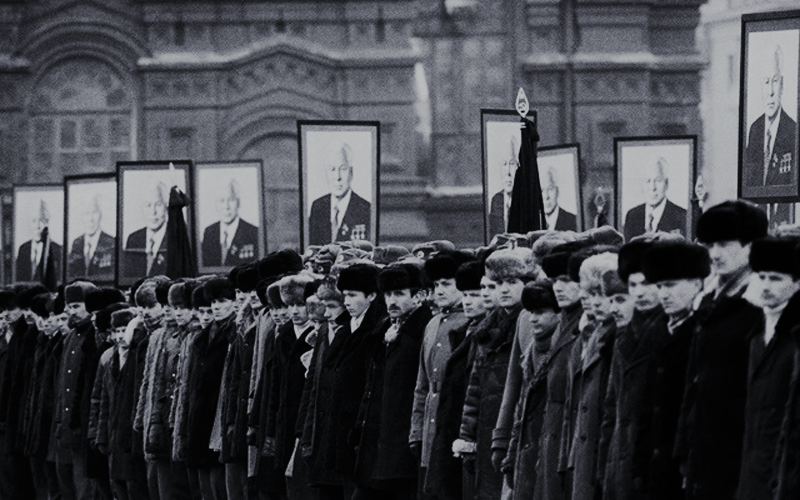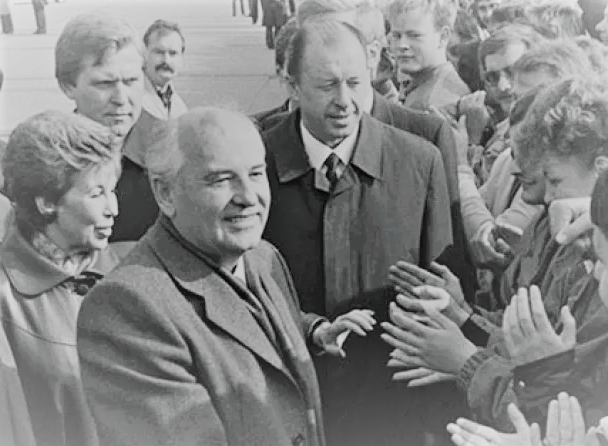Part two of this review is here

Published in 1988, The Cardinal of the Kremlin portrays a mid-Gorbachev era Soviet Union. At the time that the book was being written, Western analysts and politicians could not quite get their heads around what Soviet leader Mikhail Gorbachev was doing.
Gorbachev had come to power in 1985, the fourth General Secretary of the Soviet Communist Party in less than two and half years. In a world with two superpowers, you could say that the General Secretary was one of the two most powerful men in the world. Gorbachev followed on from three sick old men, who had died in rapid succession.
In The Cardinal of the Kremlin the Soviet leader is clearly a Gorbachev figure. Clancy’s portrayal of him, and of the Soviet Union over which he presided, reflects that mixture of optimism and caution with which the West met this young reformer. Was he the real thing? Or was all subtle pretence?
When I first read The Cardinal of the Kremlin, it was 1992, four years after its publication. I was living in an apartment in central Moscow. Very central —right next to Pushkin Square, almost opposite the Yeliseyevsky grocery store.
The Soviet Union had collapsed only a year before. Working in the Central State Archives during the day, I would get back to my apartment, eat dinner, read a few chapters, then enjoy my evening stroll, 10 minutes down the gently sloping central boulevard of Tverskaya Street to the titular Kremlin. That’s the Russia-in-fiction recommended way to enjoy this book …
The Cardinal of the Kremlin is a typical Clancy blockbuster; multiple plot strands, a strong military element, nuanced characters, and Jack Ryan at the centre. It is the third of the Jack Ryan novels to be published, and the future President Ryan is a relatively junior CIA analyst, albeit with a strong reputation and excellent access for someone of his age and level.
The ‘Cardinal’ of the title refers to the codename of a senior Russian military figure who has served for decades as a spy for the United States. And this is no plot-spoiler, since The Cardinal of the Kremlin is not really an espionage thriller in the traditional sense. The Cardinal’s role is set out early on and, although there is a separate and minor ‘hunt the mole’ plotline within the novel’s 600+ pages, The Cardinal of the Kremlin is really the first of Clancy’s wide ranging, state-and-military, international relations thrillers. In that sense, it is genre-defining.
When The Cardinal of the Kremlin was written and published, the new broom of Mikhail Gorbachev had not yet swept vigorously. He had tidied around the edges. Russia watchers in the West argued about how much reformist substance lay behind the overt differences between Gorbachev and his predecessors.
At 54 when he became Soviet leader, he was two decades younger than his immediate predecessor, Konstantin Chernenko.

Chernenko died in office in March 1985, at the age of 73. His predecessor, Yurii Andropov, died in office in February 1984 at the age of 69. His predecessor, Leonid Brezhnev, died in office in November 1982 at the age of 75.
(And it is good to see Mikhail Gorbachev outdoing them all, still going strong at a week short of his 90th birthday, as of the date of this post).
All Gorbachev had to do to break with the past, as represented by the gerontocracy he followed on from, was to walk without assistance and string a few sentences together.

That he engaged in public walkabouts, smiled lots, and talked an increasingly radical game was a bonus.
Western analysts and politicians could not agree on what Mikhail Gorbachev was doing. Many were moving beyond the notion that he was just a young and media-friendly Communist leader who only talked about reform to make what President Reagan had called ‘the Evil Empire’ of the Soviet Union seem a little less threatening. Policy and personnel changes —both in a steadily reformist direction— had made it plain, even to sceptical American ‘hawks’, that Gorbachev was changing things.
At the same time though, the hugely radical changes that would democratise the Soviet state within a couple of years were still to come. And scarcely any serious observer was yet talking about the actual collapse of the Soviet superpower, although we now know it to have been, by 1988, a mere three years away.
The novel’s Gorbachevian General Secretary figure is called Narmonov. But Clancy is not averse to inserting some real-life Soviet figures into the action.

Defence Minister Dmitrii Yazov —who in the real world was later to play a key role in the failed coup against Gorbachev of August 1991— features in a prominent role within the novel’s plot.
The Cardinal of the Kremlin‘s narrative, albeit rather didactic in places, illustrates the state of thinking in much of the US hierarchy at this time; as exemplified when the US president muses on the subject
Narmonov, General Secretary of the Communist Party of the Soviet Union. Younger than he was, the president reflected … A man with a mission, a man who probably did wish to change things, the president thought —
But is that a good thing? What if he did decentralize their economy, introduce market forces, give them a little freedom — not much, of course, but enough to get things moving? Quite a few people were warning him about that possibility: Imagine a country with the Soviets’ political will, backed up by an economy that could deliver quality goods both in the civilian and military sectors. Would it make the Russian people believe again in their system; would it revive the sense of mission that they’d had in the 1930s? We might be faced with a more dangerous enemy than ever before.
On the other side, he was told that there is no such thing as a little freedom … The momentum of events could bring the Soviet Union out of the dark ages and into the 20th-century era of political thought. It might take a generation, perhaps two, but what if the country did start to evolve into something approaching a liberal state? There was another lesson of history: liberal democracies don’t make war on one another.
Some choice I have, the president thought. I can be remembered as the regressive idiot who reinstated the Cold War in all its grim majesty — or the Pollyanna who expected the leopard to change its spots only to find that it had grown bigger, sharper fangs.
the cardinal of the kremlin, pp. 286-287
These were the sort of calculations that analysts were making at the time. Little did they know, little indeed did Gorbachev appear to know, how far gone the Soviet economy was by then. And how swiftly the truth that ‘there is no such thing as a little freedom’ would break the Soviet Union apart.
At the time of its writing, Tom Clancy’s The Cardinal of the Kremlin set forward a rounded and cautious assessment of events in the Soviet Union. Within months of its publication arguments for such caution were blown away by the world-shaking radicalism of events in the Soviet bloc.
Part two of this review is here